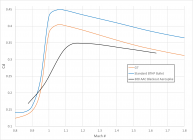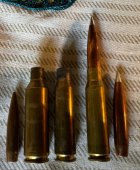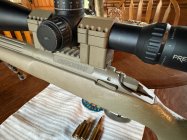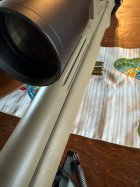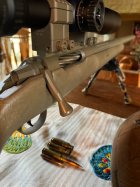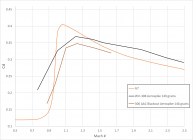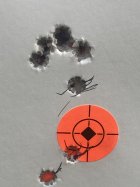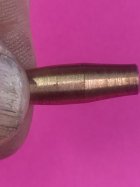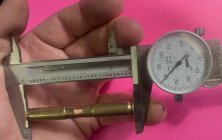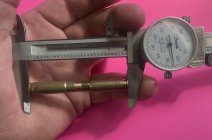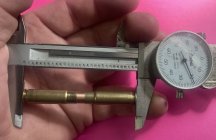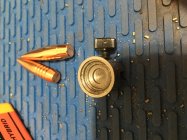Short statement, here’s a 5 shot group
Long statement details/excuses
75 yards, best I can do until the range opens back up.
Remington 700, XLR Evolution chassis 24” Bartlien 1/10
18 grains 296
2.175” COL
.100” Bearing surface in neck.
Avg Velocity 2120 fps ES 59 SD 18.6
Group includes cold clean bore
Front rest, round handgaurd
Buttstock AR type
,910 outside to outside,
View attachment 1576352
Yes, I have a photo of the 3 marked shots time stamped yesterday If I need it.
With a proper(even decent) setup I’m sure I can cut that group in half.
I need an adapter plate for the front any suggestions appreciated.
Now the bad part. More issues sorting and loading.
View attachment 1576353
You can see a definite line where the tail transitions to the bearing surface. That’s actually a lip or step. Takes about 50 pounds to force the bullet into the neck, with a distinct pop. Using an arbor press, it’s a clear problem. Probably need to drag out the dreaded concentricity gauge and see if it’s a problem. I hate to bell the case neck, shouldn’t need that.
Still problems measuring the bearing surface. Used cases opened up with a .309” mandrel. .307” pin is lose, .308 won’t go. Yes, it’s farm engineering, might be off a few thousandths. Case length 1.364, bearing surface length .2156”. Caliper should read 2.944” or something reasonably close. Three different bullets.
View attachment 1576354
View attachment 1576355
View attachment 1576356
I need to establish a base line velocity in one more rifle with a 1/7. Then match those velocities with two other bullets. Then the actual testing will begin.
I hope to get at least another 100 fps in the 1/10 twist, the long tail will
Make that difficult, but we’ll see.
I actually think there is hope for the bullet, but there is some basic production work that needs to be done. Time will tell.










